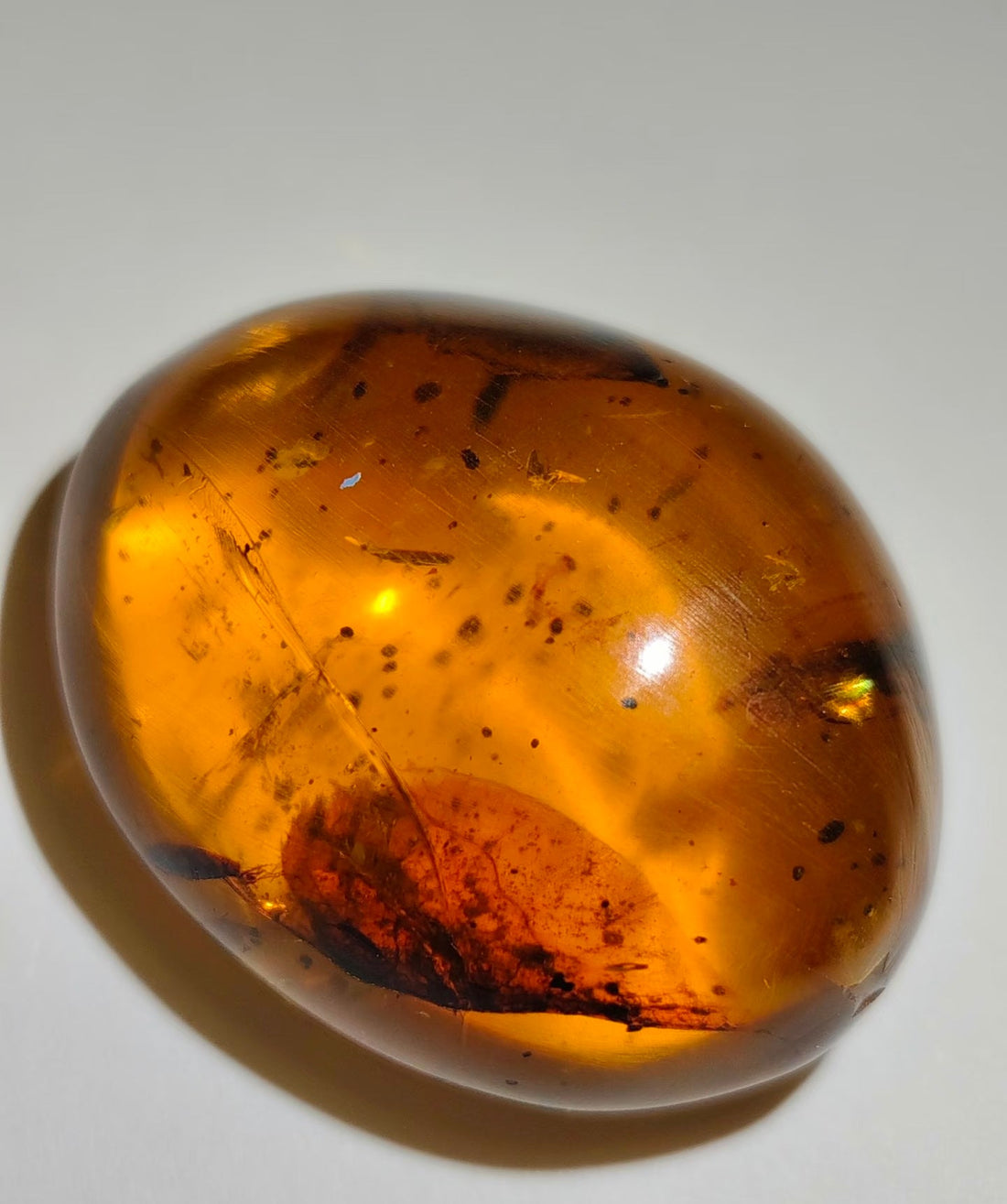
Amber Resin: Meaning, Origins, and the Allure of Warm, Golden Calm
Share
What Is Amber Resin?
Amber resin can mean two different things—one ancient, one modern.
In its original, geological sense, amber refers to fossilized tree resin, a natural material that has hardened over millions of years. Its translucent glow captures shades from honey to deep cognac, preserving fragments of prehistoric forests.
In modern fragrance circles and artisan perfume making, however, the term amber resin is often used more broadly. It commonly refers to a blended aromatic paste made from plant resins, fragrant oils, and waxes—an interpretation rather than a scientific term.
These mixtures are designed to recreate the warm, sweet, and woody scent traditionally associated with natural amber. They’re used in solid perfumes, incense, and home aromatherapy, serving as an accessible way to bring amber’s comforting aura into everyday rituals.
The Relationship Between Amber and Resin
Amber and resin are intimately connected—one is simply the ancient evolution of the other.
Resin is a sticky organic substance secreted by trees, mainly conifers, to heal bark wounds or repel insects.
When this resin is buried and preserved under the right geological conditions—low oxygen, high pressure, and gradual loss of volatile oils—it slowly polymerizes and oxidizes, turning from soft resin into solid amber over tens of millions of years.
In essence, amber is resin that time has transformed.
Where resin is pliable and fragrant, amber is durable, translucent, and stable. Once hardened, it becomes one of the few organic materials capable of surviving through ages—an embodiment of nature’s patience.
The Origins and Nature of Real Amber
Natural amber is most famously found in the Baltic region, though significant deposits also occur in Myanmar (Burmite), the Dominican Republic, and Mexico.
It has a hardness of 2–2.5 on the Mohs scale, meaning it’s softer than most gemstones yet sturdy enough for jewelry.
Amber is light, warm to the touch, and can hold static electricity when rubbed—qualities that led ancient civilizations to associate it with vital energy, sunlight, and protection.
Today, amber remains a beloved material for necklaces, bracelets, and carved sculptures. Larger amber artifacts—Buddha figures, ceremonial spheres, and even furniture accents—are valued not only for beauty but for their cultural and energetic symbolism.
Synthetic Amber Resin and Its Artistic Role
Because natural amber is rare and takes millions of years to form, artisans often turn to synthetic amber resin.
By combining clear epoxy or plant resin with yellow and orange pigments, and sometimes embedding small leaves, herbs, or bubbles, creators can reproduce the visual warmth of amber without fossilization.
This method allows for ethical, scalable production of amber-style jewelry and home décor.
Synthetic amber resin may not carry geological history, but it evokes the same sense of calm and reflection.

Price and Accessibility
Genuine amber varies in price depending on clarity and inclusions—typically $1–$10 per gram for Baltic pieces, and much higher for rare fossilized specimens.
Synthetic amber resin, on the other hand, costs about $10–$20 per 100 grams, depending on composition and scent strength.
Both serve different purposes: natural amber embodies heritage and rarity, while amber resin embodies accessibility and sensory warmth.
The Scent and Spirit of Amber Resin
Amber resin’s scent is one of depth and serenity—a golden mix of labdanum, vanilla, benzoin, sandalwood, and patchouli.
It’s simultaneously sweet, balsamic, and slightly smoky, like sunlight filtered through warm wood.
Used in aromatherapy, this scent helps reduce anxiety, support meditation, and ground emotional energy.
You can pair it with our Purifying Gift Set to create a balanced, spiritually cleansing atmosphere.
The Timeless Appeal of Amber
Amber’s recent revival stems from its emotional resonance.
In a world driven by speed and artificial light, people crave organic warmth and sensory grounding. Amber—whether as stone, color, or scent—symbolizes slow living, introspection, and comfort.
From golden-hued lighting to body oils and incense, amber has become a universal reminder that stillness can be beautiful.
How to Care for Amber and Amber Resin
Keep real amber away from alcohol, perfumes, or acidic cleaners. Wipe gently with a soft cloth, and store it separately from harder gemstones.
Amber resin perfume or incense should be sealed in a cool, airtight container to preserve its aroma.
Both forms—natural and crafted—represent the same essence: warmth, reflection, and healing through sensory calm.
✨ Frequently Asked Questions
1. Is amber resin the same as real amber?
Not exactly. Real amber is fossilized resin formed over millions of years; amber resin is a modern blend that imitates its scent or appearance.
2. How does resin turn into amber?
Tree resin becomes amber through polymerization and oxidation under heat, pressure, and low oxygen across geological time.
3. Can I wear amber jewelry daily?
Yes. It’s lightweight, skin-safe, and energetically grounding—just avoid scratches or chemicals.
4. What does amber resin smell like?
It’s warm, sweet, and slightly woody—combining labdanum, vanilla, and benzoin for a golden, soothing aroma.
5. Why is amber so beloved today?
Because it bridges nature, fragrance, and emotion—reminding us that peace and beauty can coexist in stillness.
